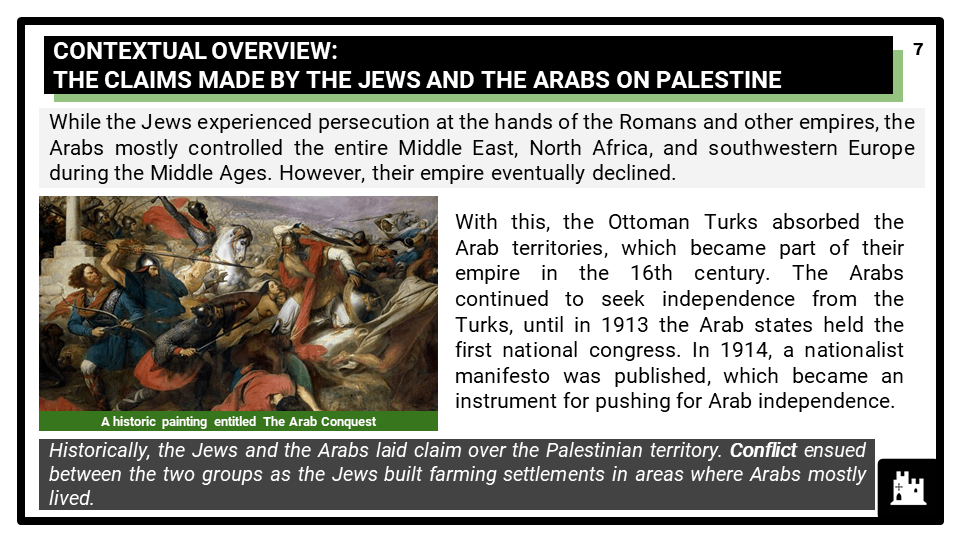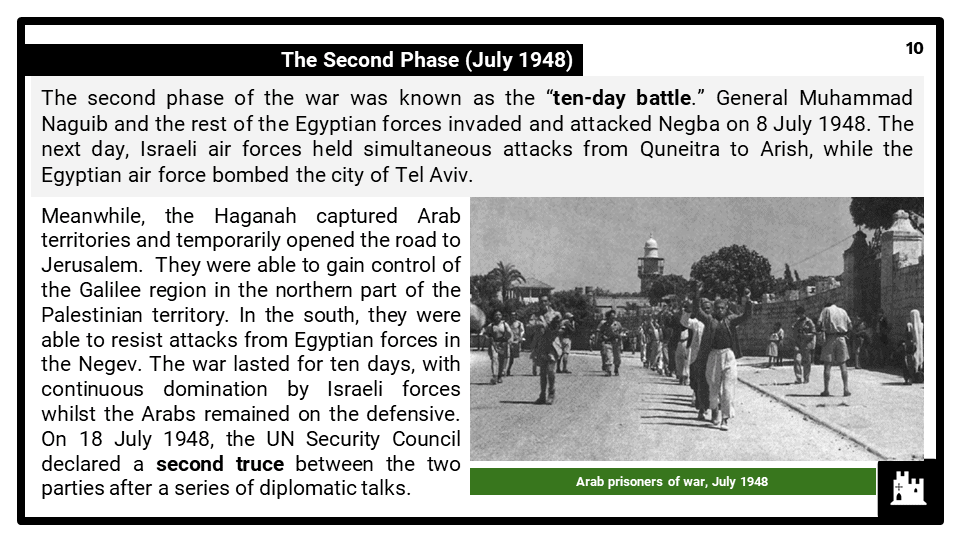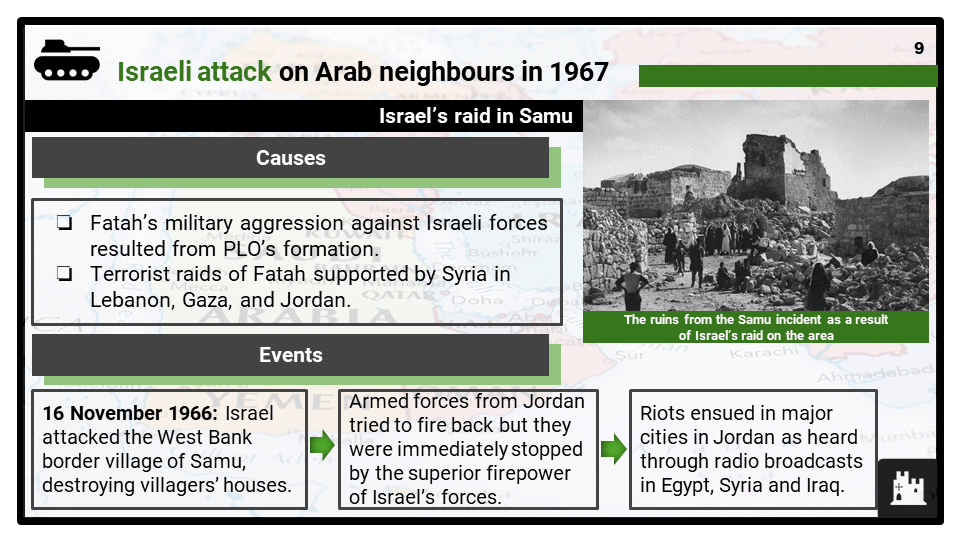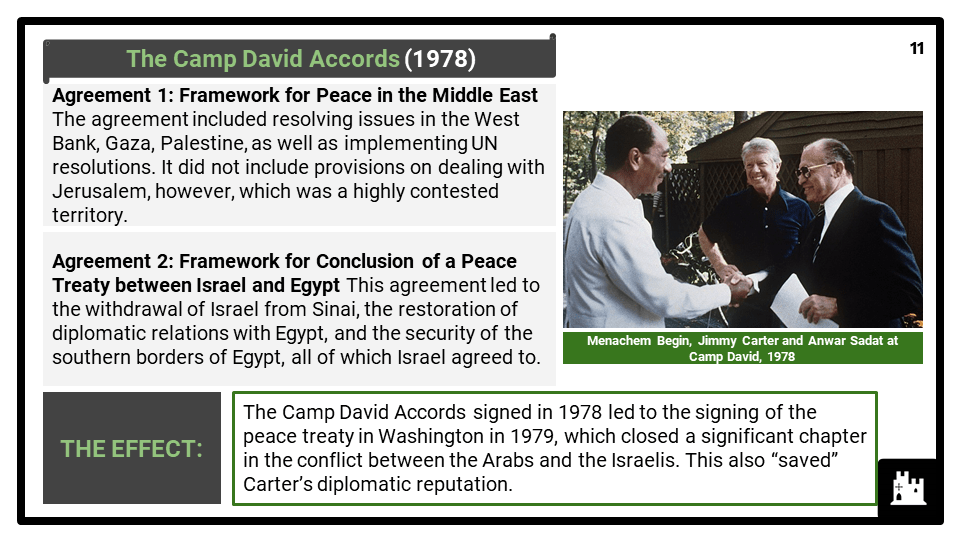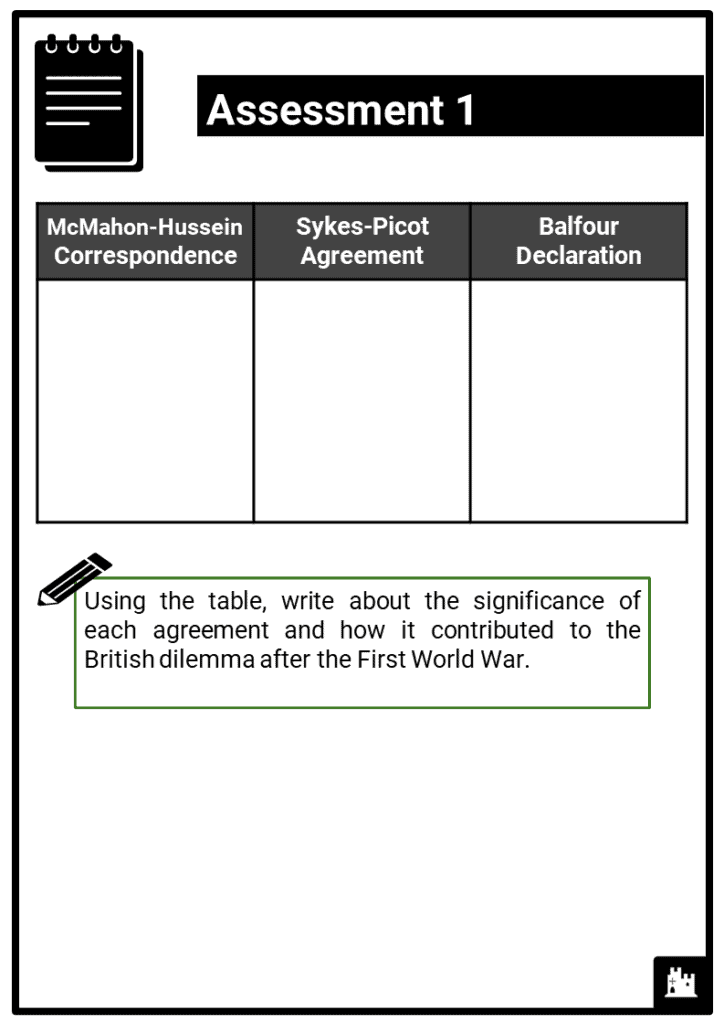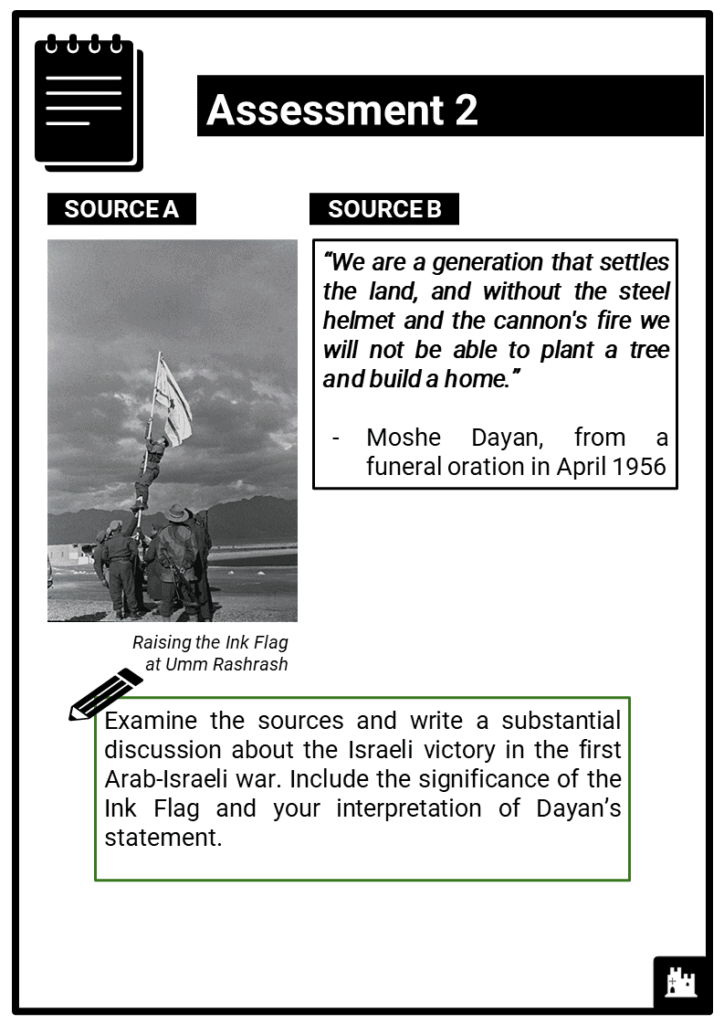Teach any Edexcel IGCSE module B7: The Middle East: conflict, crisis and change, 1917–2012, no prep needed!
Do you want to save dozens of hours in time? Get your evenings and weekends back? Be fully prepared to teach any Edexcel iGCSE topic B7?
Every Edexcel iGCSE topic B7 is covered, and each module comes complete with:
Paper 2: Breadth Studies, The Middle East, conflict, crisis and change, 1917-2012
What students need to learn:
- Build up of tension in Palestine, 1917–46
- The Balfour Declaration. Jewish immigration. Clashes between Jews and Palestinians. The Peel Commission. Arab and Jewish terrorist aims and activities. King David Hotel (1946).
- The creation of Israel, the war of 1948–49 and the Suez Crisis of 1956
- Britain hands over the problem to the UN. UN partition plan. First Arab-Israeli War. Reason for an Israeli victory. Palestinian refugee problem and growth of terrorism. Law of Return. Nasser’s motives for the nationalisation of Suez Canal. Joint British, French and Israeli attack. UN action and attitude of superpowers. Results of crisis.
- Tension and conflict, 1956–73
- Nasser and Arab aims versus Israel. Israeli attack on Arab neighbours in 1967. Events of Six-Day War. Israeli gains. Reasons for Israeli success. Impact of war on Israel and on Arab states. The importance of Palestinian resistance, especially the role of Arafat and the PLO, Black September and the Munich Olympics, 1972. Impact of the Cold War on the Arab-Israeli conflict. The Arab attack on Israel on Yom Kippur (1973). Reasons for early Arab success and eventual Israel recovery. Effects of the war on the Arab-Israeli conflict.
- Diplomacy, peace then wider war, 1973–83
- Kissinger and Shuttle Diplomacy (1973–75). Reasons for terms and results of the Camp David Agreements. The roles of Sadat, Begin and Carter. Widening of the conflict into Lebanon (1982-83), including the role of the PLO.
- The attempts to find lasting peace, 1987– 2012
- The impact of the First Intifada. Attempts to achieve peace between Israel and the Palestinians, including the motives of Arafat, Rabin, Netanyahu, Hamas, Hezbollah and the USA. The terms and results of the Oslo Peace Accords of 1993. The assassination of Rabin and Netanyahu’s opposition to Oslo. The second Intifada (2000). Attempts to re-start the talks: the 2003 Roadmap for Peace and reasons for its failure. The Gaza War (2008–09) and its effects.

